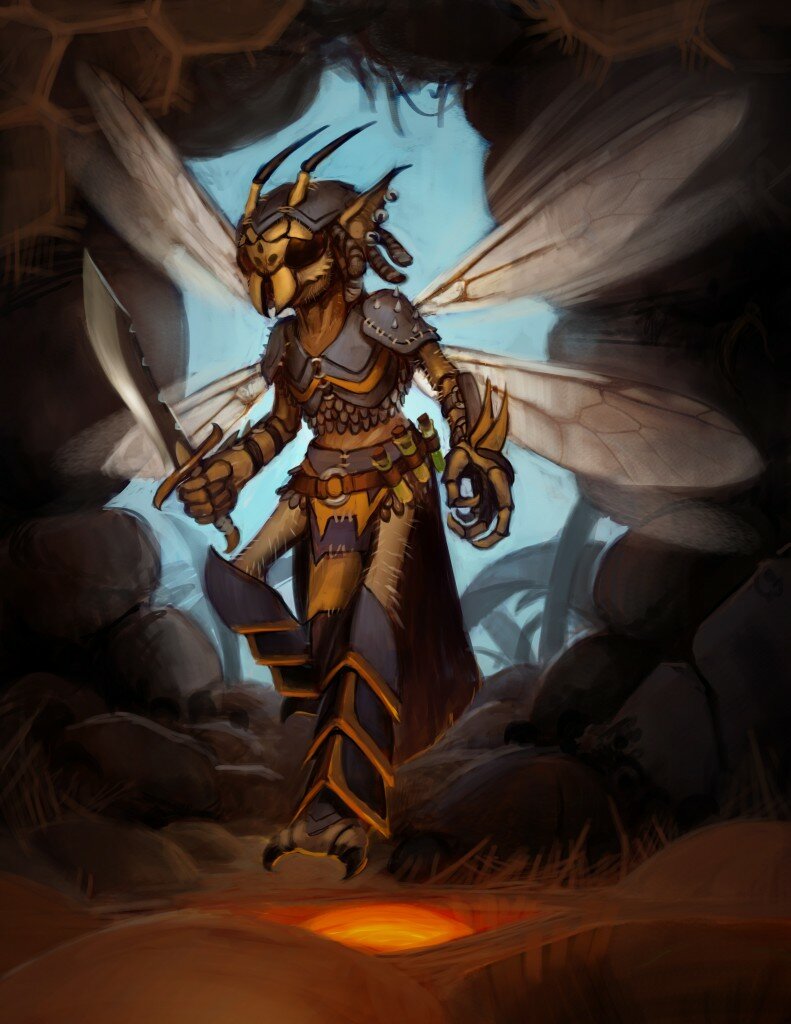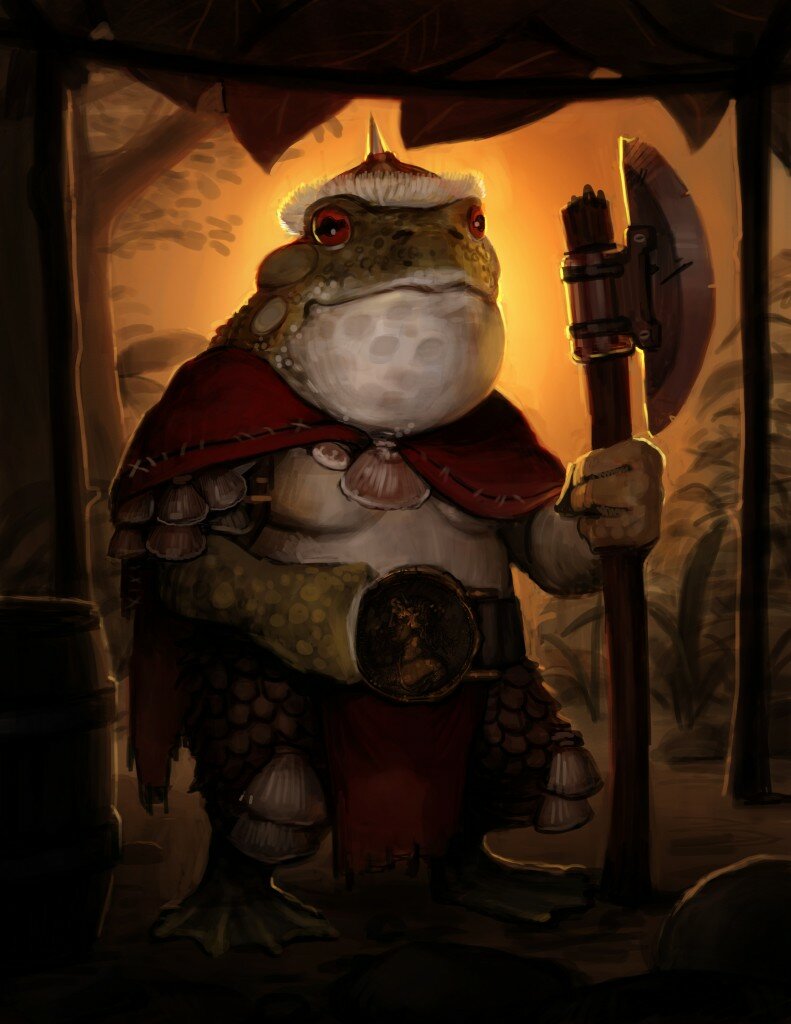When I began working on Sol Rising, I knew I wanted to make a game with a strong narrative component, more randomness than York (my previous design), and a fun take on scenarios. One of my biggest inspirations is Mice & Mystics, designed by Jerry Hawthorne and published by Plaid Hat Games.
I’m a big fan of the game, which you can see in my review of Mice & Mystics. When I found out Jerry was taking interviews for the new expansion, Downwood Tales, I immediately contacted him. Here is the result!
My comments are preceded by HG, with Jerry’s preceded by JH.
Hyperbole Games: For those who don’t know who you are, give us a quick introduction. What makes you tick? What’s something we should know about you?
Jerry Hawthorne: My name is Jerry Hawthorne and I am 46 years old. I have a lovely wife and two awesome kids. I work full time as a busy hair stylist, but I also design board games in my spare time (if you can call it that) as a freelancer. My games are visual, very story focused, family-friendly, and usually involve a healthy amount of luck. That’s just how I roll.
HG: Around 2012 you released a little game called Mice & Mystics that was a huge hit for you and Plaid Hat Games. I finished the first book, Sorrows and Remembrance, earlier this year and it was just a delight. I played it with a friend on lazy Sundays. He’d send me a text and say “bring over Rat Zelda.”
Give us the super quick explanation of what Mice & Mystics is so we’re all on the same page.
JH: Sure. Mice & Mystics is a story that you can play like a game. During the game, you will be playing the role of a human that has been magically transformed into a mouse to escape a treacherous sorceress who has placed your King under a spell and usurped his throne.
Play revolves around completing chapters in a bedtime style story book. As you play, you will also read from the story book and discover the unfolding events which will affect your game. The game was designed to give players a unique experience, and has random elements that ensure no two sessions are the same.
HG: To toss in my perspective as a player to complement your note, in addition to all of that, the game is a light, scenario driven dungeon crawler. Scenarios feature unique, thematic experiences driven by the story and these moments are strung together with a dicey combat mechanic.
Heart of Glorm, the first expansion, came out last year. It’s a great, small box with a few characters and a few new chapters. I’ve heard Downwood Tales is WAY bigger. What can we expect for this new expansion?
JH: The new expansion really adds a lot to the game. You get three new characters: A gecko named Jackobe who is hired to guide your mice through the forest. Ansel, a pure hearted warden sworn to protect the forest creatures. And Ditty, a shrew scamp who strums her magical fiddle to help the party. There are new bad guys to fight and new devious bosses, including an arrogant aristocratic bullfrog and a predatory snake named Hesster
The story is somewhat more involved, with an even stronger emphasis being placed on campaign play. There are branching story arcs and many twists and surprises, but it continues the story of Collin and gang as they are strangers in this new land. The heroes bring courage and correctness to a forest filled with dangers and double crossers.
The box is stuffed with 8 new 2 sided outdoor tiles depicting the forest floor, the burrows and tunnels under the forest, and also the trees and branches where the mice will need to go to traverse the terrain challenges in their path. There are also a bunch of new figures, 60 new search cards, and about 30 new abilities.
HG: Can you comment further on the branching play, perhaps with a tiny example? This was something I sought to do with Sol Rising to try to address the comment that scenario games are only fun once. But, also, I wanted to give players a little agency over their story.
How did you tackle this challenge?
JH: It was very challenging because the story has to come around to the same place eventually. I’ll give an example: At the end of chapter 1, there are two possible outcomes. The story splits and there is a chapter 2a and 2b. There are also two possible outcomes for chapter 2a, one will have you playing 2b, the other allows you to advance to chapter 3.
Wow, that sounds more complicated than it is. Anyway, these were very difficult to write because the events have to feel as though they fit story wise. I think we accomplished it quite well.
HG: As a designer and player I love expansions. They are a great opportunity to explore new avenues. What was the number one thing you wanted to do with Downwood Tales?
JH: With Downwood Tales, I wanted to give the players a more epic story that would seamlessly continue the adventure. I wanted to provide more bad guys with challenging abilities. I also wanted to take cinematic game play to the next level.
In Downwood Tales your party might come to an impassable chasm in the forest. There could be a variety of options the players would need to discuss. Do you go around by exploring to another tile? Do you climb a nearby tree and use a leaf to float down to the other side? Or do you have a wild figure in your party who knows which vines might allow you to climb down into the chasm and continue in the tunnels known as the Underwood?
HG: I really like this opportunity for group discussion. It definitely has that “Lord of the Rings” element of “where do we go from here?” Could you give an example of the more challenging enemies? How did you up the challenge with the bad guys?

Fearie
JH: Sure! We have frogs that leap around, newts that shoot flaming arrows, fearies that fly and they can curse you, bullfrogs who can zap you with their tongue, weasels that clobber you, and Hesster the snake who is this story’s equivalent of Brodie.
HG: I prefer cats to snakes. Much like Indiana Jones.
Expansions are also a great way to address rough spots or merely improve things that, in retrospect, you wanted to be better. Did you have any of those? Does Downwood Tales really improve something from the base game?
JH: I’m not a person who dwells too much on past failings or tries to use expansions as fixes. Mice & Mystics has resonated with its fans because it is an approachable game that really puts the story first. I wanted to give more of that stuff. The game is the same, the environment has changed for the mice. There are a lot of things to discover.
HG: How did you want to advance the story? Was there anything in particular you wanted to accomplish?
JH: I wanted to tell a story about growing up, rising to your expectations, the weight and responsibility of authority. These are very much a topic in my household, but can be applied to global events as well. As always, the story is light and filled with the same silly humor that you come to expect from jokers like Nez and Filch. But there are tender moments and contemplative moments as well.
HG: I’m trying to estimate the percentage of tenderness that came from Lord Bistro…
You have some really clever story and mechanical moments in Sorrows and Remembrance. I loved gambling with the rats and trying to keep Vurst on my side as we went through the sewers was really neat. Do you have any really cool set pieces in Downwood Tales?
JH: Yeah, this is just something you all can expect from Mice & Mystics. Each chapter will have a completely new and different set of challenges, and not all of them will involve fighting. There is an entire stealth chapter that the playtesters were raving about. There is a “Last of the Mohicans” style ambush chapter that is a lot of fun, and even a race down a babbling brook on boats made from fallen leaves.

Shalop
HG: I like the idea of the ambush. It’s such a unique element to warfare games often miss. It’s usually just a straightforward fight. Finding ways to spice up every battle is really appreciated.
Different games need different testers. For something like Summoner Wars you want someone like James Sitz who is incredibly analytical and competitive. Mice & Mystics is such an experience though, if that makes sense. Yes, balance is important so it isn’t too easy or difficult, but I feel like you’re testing its soul more than its stats. Have you found it difficult to test the game and find the right people?
JH: For Downwood Tales, I gathered a small group who I call my ‘creative core.’ These guys helped me ensure that the chapters had the same compelling quality as the base game and that they offered a play experience that was cinematic and charming. The second playtest phase involved a huge group of volunteers who put in about 500 tests. This helps balance the challenge level. Some chapters may be harder than others (that’s just the nature of designing around a story), but none of them are unfairly tough.
HG: I spent the past year working on a story-driven tactical game, which was greatly inspired by your work on Mice & Mystics. Working on the narrative in a way that made sense and paired with the game was really difficult. What is something you’ve learned working on Mice & Mystics about story-driven games? What were some of your biggest challenges?
JH: Well, I’m glad you see how tough it is. I really have to say that it was an exhausting, grey hair inducing roller coaster. But I have gotten better at it. The trick is to portion out your story beforehand in equal chunks (chapters) that each rise and fall like an independent story within a story.
As an example, the first chapter of Downwood Tales has the mice traveling from Barksburg to a town called Headfall Hollow, that is located deep in the Downwood. This is rather easy. The story starts at Barksburg and ends at Headfall Hollow. What happens in-between gets filled in like using crayons to color the stuff between the black lines of a picture in a coloring book.
HG: I agree to this approach. With Sol Rising I created mini-arcs of about 3 missions apiece that contributed to the entire story. Thinking about the big points was not too difficult, but coloring in the spaces? Not so easy.
What are some of your favorite games to play? How, if at all, did they inspire you?
JH: Everyone knows I love Heroquest, and that Mice & Mystics was heavily inspired by it. Heroscape also holds a prominent portion of my heart.
Recently, I have had the opportunity to play the finalized version of Dead of Winter. I can’t wait to play it again. It is a game that offers an experience so incredibly close to its aim, that I can’t imagine anybody ever getting tired of it. It perfectly creates the same emotional response from players as you’d expect from a real desperate group survival scenario. Every choice seems so important… It’s blissfully agonizing.
HG: I played an earlier version of Dead of Winter when Colby and Isaac visited San Francisco. Pretty entertaining! The pre-order is still available, actually.
This just occurred to me writing the questions, but would you ever want to create another experience within the Mice & Mystics universe? For example, managing the mouse city and the goings on, or playing the game from the perspective of the bad guys. Would that even appeal to you? Have you thought of something like this?
JH: I’m actually currently working on another game in the Mice & Mystics world. I can’t talk about it yet, but I am very interested in exploring the potential of the Mice & Mystics world.
HG: Excellent! Some of your first design projects were on Heroscape. Mice & Mystics has a similar heft – simple combat, clean abilities, simple movement. What are some of the most important things you learned working on Heroscape?
JH: I learned that theme can be supported with simple game mechanics. As an example, Jackobe the gecko in Downwood Tales uses a boomerang. To convey the odd way that boomerangs work, I wrote an ability for it that allows it to curve around and hit an enemy from behind should he miss with the initial throw.
Simple but thematic, and that is exactly how Heroscape is.
HG: Are you able to comment on when we can expect to purchase, approximately, Downwood Tales?
JH: I don’t have that info yet, but I should have a better guess in a few days.
HG: Anything else you want to add?
JH: I’d like to thank you for taking the time to do this Q&A. Also, thank you for your fantastic blog. I really enjoy reading your thoughts on game design. I find myself needing these perspectives from others who enjoy the thematic game sub-genre as much as I do. Most blogs on game design are directed at the more structured nuts and bolts stuff that I find so dry.
HG: The pleasure is all mine. Thank you so much for taking the time to do this.


